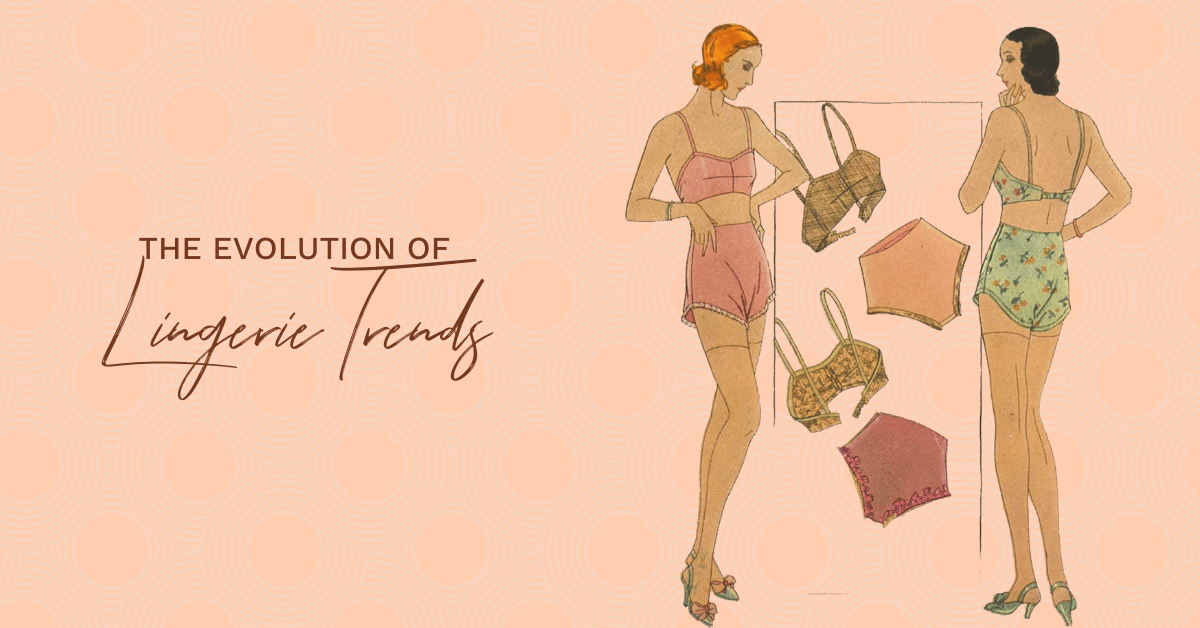
Lingerie Through the Ages
The history of lingerie is a fascinating journey that spans centuries and reflects the changing ideals, social norms, and fashion trends of different eras. Lingerie, as we understand it today, refers to undergarments worn by women, typically including bras, panties, corsets, garters, stockings, and various other garments meant to enhance or shape the female form. Let’s explore the history of lingerie from its early origins to the present day:
1. Ancient and Medieval Times:
- Ancient civilizations, such as Egypt, Greece, and Rome, had simple undergarments made of linen or silk. These garments were mainly functional, providing modesty and hygiene.
- In the Middle Ages, women wore a linen chemise as an undergarment, which served as a barrier between the body and outer clothing.
2. Renaissance and 17th Century:
- During the Renaissance, women’s undergarments started to include stays, which were rigid bodices made of whalebone or wood. They were designed to shape the torso into the desired fashionable silhouette.
- As the 17th century progressed, stays evolved into corsets, becoming more structured and tightly laced to create an hourglass figure.
3. 18th Century:
- The 18th century saw the emergence of panniers or side hoops, which were wide structures worn under skirts to create a wide silhouette. These were often accompanied by corsets to accentuate the waist.
- Shifts, which were simple, loose-fitting undergarments made of linen, were worn next to the skin for hygiene purposes.

4. 19th Century:
- The 19th century brought significant changes to lingerie. The corset became an essential undergarment for women, emphasizing a tiny waist and an hourglass shape.
Crinolines, made of horsehair or steel hoops, replaced panniers and created a bell-shaped silhouette. - Drawers, a bifurcated undergarment similar to modern-day panties, began to be worn by women.

5. 20th Century:
- The early 20th century witnessed the rise of the brassiere or bra, which gradually replaced the corset as a more comfortable and flexible option.
- In the 1920s, the boyish figure became fashionable, leading to less restrictive undergarments like bandeau bras and camisoles.
- The invention of nylon in the 1930s revolutionized lingerie, making it more affordable and widely available.
- In the 1940s and 1950s, with the influence of Hollywood and pin-up culture, lingerie became more glamorous and emphasized female curves.
- The 1960s saw the emergence of the bikini and the introduction of pantyhose, which combined stockings and panties in one garment.

6. Late 20th Century and Beyond:
- In the 1970s, there was a shift towards natural, unstructured undergarments, reflecting the era’s more relaxed fashion trends.
- The 1980s and 1990s brought about the rise of lingerie as outerwear, with lace-trimmed camisoles and slips worn as fashionable pieces.
- The 2000s and beyond have seen a wide variety of lingerie styles, ranging from practical and comfortable to seductive and provocative designs.
- In recent years, there has been a greater emphasis on inclusivity and diversity in lingerie, with brands catering to a wider range of body types, skin tones, and personal preferences.

Throughout history, lingerie has evolved alongside societal changes and has been influenced by cultural, economic, and technological advancements. Today, it continues to be an important part of women’s fashion, empowering individuals to express their personal style and confidence.





Leave a Reply